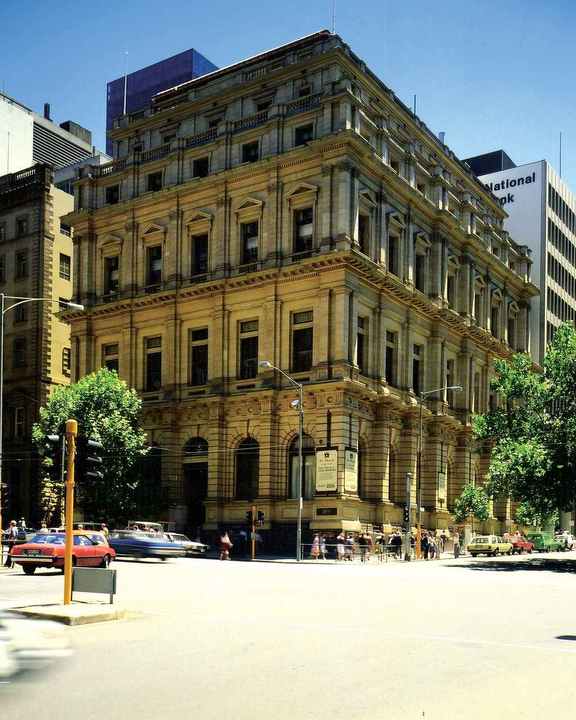| Back to search results » | Back to search page » |
|
Former Bank Of Australasia
Other NamesSebel Hotel , ANZ Bank Location394 - 398 Collins Street,, MELBOURNE VIC 3000 - Property No B0084
File NumberB0084LevelState |
|
Statement of Significance
What is significant? The Bank of Australasia was founded in Sydney in 1835. It quickly opened branches in Hobart and Launceston, and then in Melbourne in 1838. Due to vigorous growth in the Melbourne economy, especially during the 1850s, it was decided that the Australian headquarters of the bank would be located in the prospering town. A prominent corner site in the centre of Melbourne's banking district was purchased in 1858 and a building was constructed in 1876. The Bank of Australasia had early associations with small indigenous banks seeing itself primarily as a support for pioneers. It was a conservatively run bank that managed to weather the financial collapses of the 1890s and the 1930s.
The history of this building is dominated by the fact that it was designed in two stages by two different architects. The architects for the first stage, Reeds & Barnes, designed a restrained two storey Classical building, constructed of imported Omaru stone, with a rusticated base, a prominent cornice and grouped corner pilasters. The architects for the second stage of the building, in 1929, were A & K Henderson. Three stories were added which matched the original building in both external style and materials. To externally continue the classical style established with the original building, the third storey was given a very prominent cornice, the fourth level was conceived of as an attic level and the fifth was set well back. The interior was completely reconstructed. A mezzanine level was added within the ground floor banking chamber with ornate metal balustrades and a light well was built through the centre of the building culminating in a glazed sky light over the banking chamber. On the first floor the boardroom was positioned to overlook the light well. The interior plaster decoration was continued in the original Renaissance Revival flavour. From the 1970s the light well was filled in and intermediate levels added between floors three and four, and also between the first and second floor. The ANZ Bank sold the building in 1974, ending 98 years of occupancy.
How is it significant? The former Bank of Australasia, is of architectural and historical significance at a State level.
Why is it significant? The former Bank of Australasia is of architectural significance as an example of conservative Renaissance Revival design. The 1876 design is significant for its successful manipulation of classical elements to a corner location. The use of superimposed trabeated architectural systems and the groupings of pilasters at the corners of the building enable the impression of a classical three dimensional presence, while only actually decorating two faces. The early building is also significant for its use of imported stone from New Zealand, demonstrating the resources available and the ties the bank had in the 1870s. The 1929 additions are significant as an example of building expansion during the depression era, when it was common to add more storeys to a building instead of total reconstruction. These additions are also significant as a skilful solution to the problem of adding levels to an already complete classically based design. The former Bank of Australasia is significant as an example of conservative design expression representing a conservative bank, in a period when more modern designs were going up all over the city.
The former Bank of Australasia is of historical significance as the headquarters of a major banking company within Australia from 1876 to 1974. It is significant for its position on a corner site within the centre of the banking precinct in Melbourne, which was the most important business centre at the time in Australia due to its growth and wealth. The Bank of Australasia is of historical significance for its conservative nature, which is reflected in both the original facades and the 1920s additions. In this period the architectural expression of the bank served as a metaphor for the impression the company wanted sent out to the community. In this case it was images of solidity and confidence. The existing interior layout of the banking chamber, the vaults, the board room and the managers office are of historical significance as they reflect the operations and hierarchy of a major banking headquarters. The 1929 boardroom, in particular, is illustrative of the banking business culture during the 1930s. It is significant as a rare example of a surviving boardroom from a banking headquarters of that period.
Classified: 05/06/1958
Revised: 03/08/1998
Group
Commercial
Category
Bank




